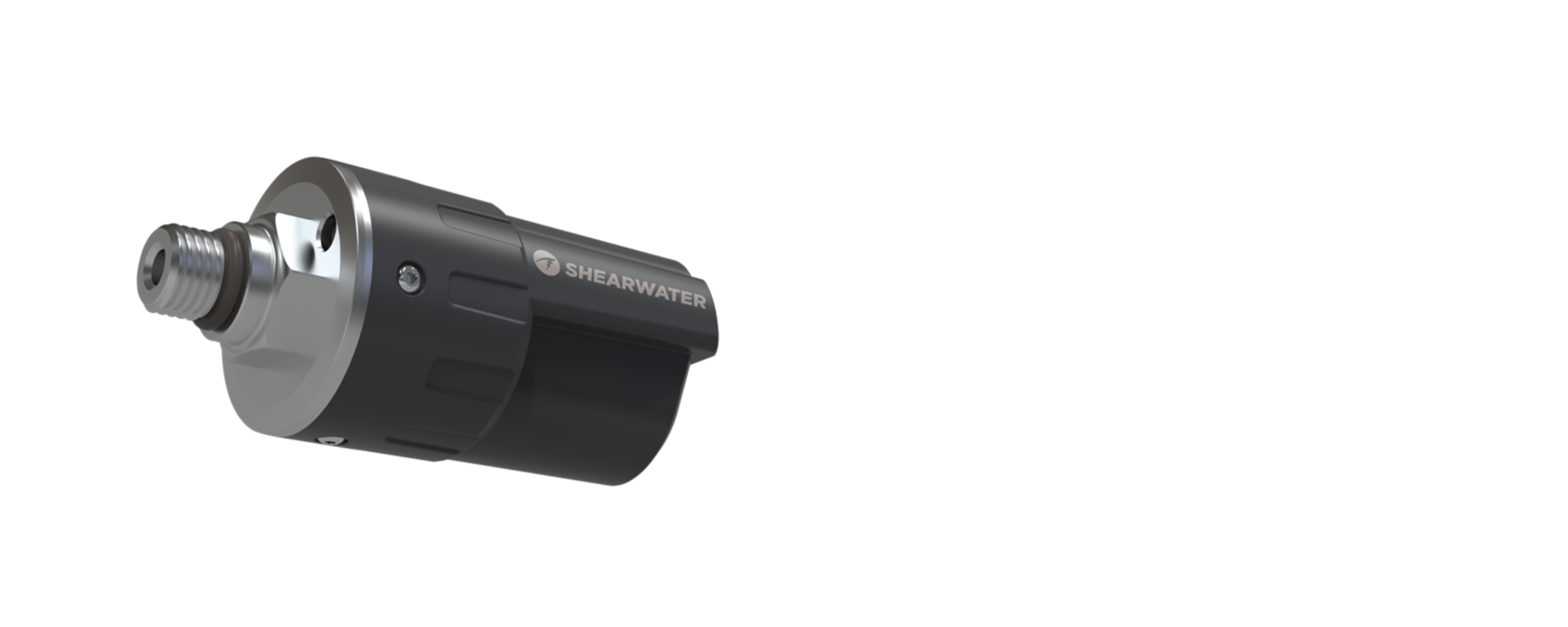เอกสาร
ที่นี่คุณจะพบกับคู่มือที่สำคัญทั้งหมดสำหรับตัวส่งสัญญาณ Swift หากคุณไม่พบสิ่งที่กำลังมองหา โปรดติดต่อทีมบริการลูกค้าของเรา
- Swift Manual - English
- Swift Manual - French
- Swift Manual - German
- Swift Manual - Italian
- Swift Manual - Japanese
- Swift Manual - Korean
- Swift Manual - Simplified Chinese
- Swift Manual - Spanish
- Swift Manual - Traditional Chinese
- Swift Manual - Portuguese
การเปลี่ยนแบตเตอรี่ Swift
FAQ
ยังมีคำถามอีกหรือไม่? เรามีคำตอบให้
ไฟ LED ที่ด้านบนของ Swift ไม่ใช่ไฟบัดดี้ ไฟนี้ช่วยแสดงว่าเครื่องส่งสัญญาณทำงานอย่างถูกต้อง
ไฟ LED ถูกออกแบบมาให้มีความสว่างค่อนข้างน้อยเพื่อให้เครื่องส่งสัญญาณมีอายุการใช้งานแบตเตอรี่ที่ยาวนานที่สุด ไฟ LED มีประโยชน์ในการเป็นตัวบ่งชี้สถานะ แต่ไม่สว่างพอที่จะใช้เป็นไฟบัดดี้ได้
เครื่องส่งสัญญาณ Swift สร้างขึ้นด้วยวัสดุที่ใช้กับ O2 ได้ แต่ Swift ไม่ได้ถูกจัดส่งในสภาพที่ "สะอาดสำหรับออกซิเจน" (O2 clean)
อายุการใช้งานแบตเตอรี่ของ Swift อยู่ที่ประมาณ 300 ชั่วโมงการดำน้ำ หรือ 5 ปีเมื่อจัดเก็บ
สิ่งสำคัญคือต้องตรวจสอบให้แน่ใจว่าเรกูเลเตอร์ที่ติดตั้ง Swift นั้นได้มีการไล่แรงดันออกแล้วเมื่อไม่ได้ใช้งาน
Swift จะยังคงส่งสัญญาณแรงดันก๊าซต่อไปหากมีแรงดันสูงกว่า 3.5 บาร์ (50 psi)
แบตเตอรี่สามารถเปลี่ยนได้โดยผู้ใช้โดยการถอดฝาครอบของ Swift ออก โปรดดูคู่มือการใช้งาน Swift สำหรับคำแนะนำในการเปลี่ยนแบตเตอรี่
Swift มีการปรับปรุงหลายอย่างเมื่อเทียบกับเครื่องส่งสัญญาณ Shearwater รุ่นเก่า:
- ระบบหลีกเลี่ยงการรบกวนสัญญาณแบบแอคทีฟช่วยให้เครื่องส่งสัญญาณหลายเครื่องทำงานพร้อมกันได้โดยไม่มีการรบกวนสัญญาณ จำนวนเครื่องส่งสัญญาณรุ่นเก่าที่แนะนำสูงสุดคือสองเครื่อง (สีเทาหนึ่งเครื่อง สีเหลืองหนึ่งเครื่อง)
- ไฟ LED แสดงสถานะให้ข้อมูลการวินิจฉัยที่รวดเร็ว
- Swift มีขนาดเล็กกว่าเครื่องส่งสัญญาณ Shearwater รุ่นเก่า
- Swift มีฐานโลหะที่แข็งแรงทนทานซึ่งช่วยให้สามารถติดตั้งได้ด้วยมือโดยไม่จำเป็นต้องใช้เครื่องมือหรือประแจพิเศษ
- การออกแบบโอริงคู่ของ Swift ช่วยลดโอกาสที่จะเกิดน้ำท่วมหลังจากเปลี่ยนแบตเตอรี่
- Swift ไม่น่าจะถูกเข้าใจผิดว่าเป็นลูกบิดวาล์วถัง
- Swift ได้รับการออกแบบและสร้างในบริติชโคลัมเบีย ประเทศแคนาดา
Swift สามารถใช้งานร่วมกับคอมพิวเตอร์ Shearwater ที่รองรับการเชื่อมต่อกับเครื่องวัดแรงดันอากาศรุ่นก่อนหน้าได้ทั้งหมด และมีแนวโน้มที่จะทำงานร่วมกับคอมพิวเตอร์จากยี่ห้ออื่นที่ใช้เครื่องส่งสัญญาณที่มีเครื่องหมาย MH8A ได้ อย่างไรก็ตาม ไม่สามารถรับประกันการทำงานร่วมกับไดฟ์คอมพิวเตอร์จากยี่ห้ออื่นได้
สามารถใช้งานร่วมกับคอมพิวเตอร์ Shearwater ที่รองรับการเชื่อมต่อกับเครื่องวัดแรงดันอากาศรุ่นก่อนหน้าได้ทั้งหมด และมีแนวโน้มที่จะทำงานร่วมกับยี่ห้ออื่นที่ใช้เครื่องส่งสัญญาณ MH8A
การรองรับเครื่องส่งสัญญาณ 4 ตัวได้ถูกเพิ่มเข้ามาในการอัปเดตเฟิร์มแวร์ฟรีล่าสุดสำหรับคอมพิวเตอร์ Shearwater ที่รองรับการเชื่อมต่อกับเครื่องวัดแรงดันอากาศทุกรุ่น ฟีเจอร์ใหม่นี้ช่วยให้สามารถดูความดันแก๊สของถังได้สูงสุด 4 ถังพร้อมกัน
จากมุมมองของส่วนต่อประสานกับผู้ใช้ การแสดงผลเครื่องส่งสัญญาณมากกว่า 4 เครื่องนั้นซับซ้อน และในการทดสอบของเรารู้สึกว่ามันส่งผลเสียต่อประสบการณ์ของผู้ใช้
แม้ว่า Swift จะสามารถใช้งานในลักษณะนี้ได้ แต่ก็ไม่ได้ถูกออกแบบมาเพื่อติดตามความดันแก๊สของบัดดี้คุณ ระยะส่งสัญญาณคือ 1 เมตร (3 ฟุต) ดังนั้นหากคุณไม่ได้ดำน้ำในระยะที่ใกล้กันมาก ก็อาจจะมีการสูญเสียการสื่อสารเป็นประจำ
ได้ Swift จะหลีกเลี่ยงการรบกวนสัญญาณกับเครื่องส่งสัญญาณรุ่นเก่า
ไม่จำเป็นต้องใช้สีต่างกัน เนื่องจากช่วงเวลาการส่งสัญญาณของ Swift ไม่ได้ถูกกำหนดไว้ตายตัว
ในขณะที่เราจะพยายามช่วยเหลือลูกค้าอย่างเต็มที่เสมอ แต่เราไม่มีคุณสมบัติในการช่วยเหลือในการตั้งค่าคอมพิวเตอร์ที่ไม่ใช่ของ Shearwater เราขอแนะนำให้ติดต่อร้านดำน้ำในพื้นที่ของคุณเพื่อขอความช่วยเหลือในการตั้งค่าผลิตภัณฑ์ที่ไม่ใช่ของ Shearwater
ในการใช้งานปกติ แบตเตอรี่ของเครื่องส่งสัญญาณ Swift จะใช้งานได้นานหลายปี เนื่องจากการเปลี่ยนแบตเตอรี่ไม่บ่อยนัก เราจึงเลือกใช้ฝาปิดที่ผู้ใช้สามารถถอดออกได้ซึ่งช่วยให้การออกแบบโดยรวมมีขนาดเล็กลง ช่วงเวลาที่ยาวนานระหว่างคำเตือนแบตเตอรี่ต่ำครั้งแรก (สีเหลือง) และการส่งสัญญาณครั้งสุดท้ายจะช่วยให้คุณสามารถดำน้ำได้อีกหลายครั้งหลังจากคำเตือนแบตเตอรี่ต่ำครั้งแรก ซึ่งช่วยลดความเร่งด่วนในการเปลี่ยนแบตเตอรี่ ควรเปลี่ยนแบตเตอรี่โดยเร็วที่สุดหลังจากคำเตือนแบตเตอรี่ครั้งแรก (สีเหลือง) และทันทีหลังจากคำเตือนแบตเตอรี่ต่ำขั้นวิกฤต (สีแดง)
เทคโนโลยีเครื่องส่งสัญญาณแบบ RF Air Integrated ได้รับการพิสูจน์แล้วว่าเชื่อถือได้มานานหลายทศวรรษ และเราต้องการให้แน่ใจว่าการปรับปรุงใด ๆ ที่เราทำจะสามารถใช้งานร่วมกับไดฟ์คอมพิวเตอร์ Shearwater รุ่นก่อนหน้าทั้งหมดได้
จัดตำแหน่งเครื่องส่งสัญญาณให้อยู่ฝั่งเดียวกับร่างกายที่คุณสวมไดฟ์คอมพิวเตอร์
จำเป็นต้องใช้เฉพาะในกรณีที่ใช้สาย HP เท่านั้น โดยจะต้องใช้อุปกรณ์เสริม 'แกนสปูล' (ไม่รวมอยู่ในชุด) ในกรณีนี้ แกนสปูลจะทำหน้าที่รับแรงดันอากาศ และโอริงที่ฐานของเครื่องส่งสัญญาณจะป้องกันไม่ให้น้ำเข้าไปในเกลียวของข้อต่อสาย ขนาดแกนสปูลคือ 21x4.25 มม.
ระยะส่งสัญญาณประมาณ 3 ฟุต (1 เมตร) สัญญาณ RF อาจได้รับผลกระทบจากวัตถุ ดังนั้นจึงควรวางเครื่องส่งสัญญาณไว้ฝั่งเดียวกับไดฟ์คอมพิวเตอร์ที่รับสัญญาณ
ในกรณีส่วนใหญ่จะมีเวลาในการส่งสัญญาณมากกว่า 20 ชั่วโมง
Swift มาพร้อมกับแบตเตอรี่ Panasonic CR2 คุณภาพสูง ซึ่งจะให้เวลาในการส่งสัญญาณนานกว่า 25 ชั่วโมงนับจากการเตือนแบตเตอรี่ต่ำครั้งแรก (สีเหลือง) ที่อุณหภูมิประมาณ 20°C เวลาในการส่งสัญญาณที่แน่นอนจะขึ้นอยู่กับอุณหภูมิและประเภทของแบตเตอรี่ที่ติดตั้ง Swift ได้รับการออกแบบมาเพื่อให้คุณสามารถสิ้นสุดทริปดำน้ำได้อย่างสบายใจโดยไม่จำเป็นต้องเปลี่ยนแบตเตอรี่ในภาคสนาม อย่างไรก็ตาม ควรเปลี่ยนแบตเตอรี่โดยเร็วที่สุดหลังจากมีคำเตือนแบตเตอรี่ต่ำ
ระยะการส่งสัญญาณจะลดลงเมื่อแบตเตอรี่อ่อน สัญญาณเตือนแบตเตอรี่ต่ำจะให้ข้อมูลที่เป็นประโยชน์เมื่อสิ่งนี้เริ่มเกิดขึ้น คำเตือนแบตเตอรี่ต่ำจะเกิดขึ้นก่อนที่ระยะการส่งสัญญาณจะลดลงอย่างมีนัยสำคัญ
Swift ได้รับการออกแบบโดยคำนึงถึงการใช้งานเครื่องส่งสัญญาณหลายเครื่องพร้อมกัน โดยจะ 'ฟัง' สัญญาณจากเครื่องส่งสัญญาณอื่นในบริเวณใกล้เคียง และปรับเปลี่ยนช่วงเวลาการส่งสัญญาณแบบไดนามิกเพื่อหลีกเลี่ยงการรบกวน
ได้ การส่งสัญญาณจากเครื่องส่งสัญญาณรุ่นเก่าจะถูกตรวจจับโดย Swift และ Swift จะปรับเปลี่ยนช่วงเวลาการส่งสัญญาณเพื่อหลีกเลี่ยงการรบกวนสัญญาณกับเครื่องส่งสัญญาณเหล่านี้ เครื่องส่งสัญญาณรุ่นเก่าไม่สามารถหลีกเลี่ยงการรบกวนสัญญาณระหว่างกันหรือกับ Swift ได้
เราไม่ได้ออกแบบขีดจำกัดสูงสุดที่เฉพาะเจาะจงสำหรับจำนวนเครื่องส่งสัญญาณ Swift ที่สามารถทำงานในระยะใกล้กันได้ ในการทดสอบของเรา เรามีเครื่องส่งสัญญาณ 20 เครื่องทำงานได้ตามปกติเมื่ออยู่ในระยะใกล้กัน สิ่งนี้ควรจะขจัดข้อกังวลใดๆ เกี่ยวกับเครื่องส่งสัญญาณที่รบกวนซึ่งกันและกันในทางปฏิบัติ
การส่งสัญญาณจะเกิดขึ้นในช่วงเวลา 4.8 ถึง 5.2 วินาที ดังนั้นจะส่งประมาณทุกๆ 5 วินาที
คอมพิวเตอร์ Shearwater จะแจ้งเตือนผู้ใช้ด้วยคำเตือน "Lost Comms" สีเหลืองหลังจากไม่ได้รับสัญญาณประมาณ 30 วินาที ความดันแก๊สล่าสุดที่ทราบจะยังคงแสดงผลต่อไปจนกว่าจะครบ 90 วินาที จากนั้นคำเตือน "Lost Comms" สีแดงจะปรากฏขึ้นและความดันแก๊สจะไม่ถูกแสดงผลอีกต่อไป
คุณสามารถดูใบรับรองสำหรับผลิตภัณฑ์ Shearwater ทั้งหมดได้ที่นี่
เครื่องส่งสัญญาณ Swift ได้รับการออกแบบและสร้างขึ้นที่โรงงานของเราในบริติชโคลัมเบีย ประเทศแคนาดา


